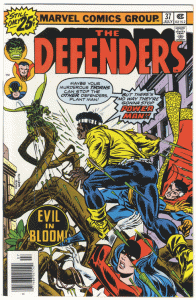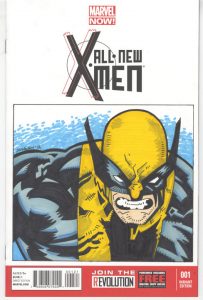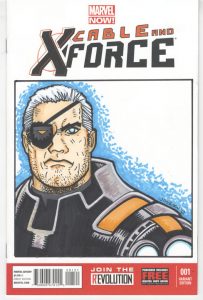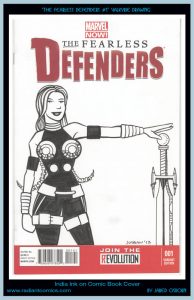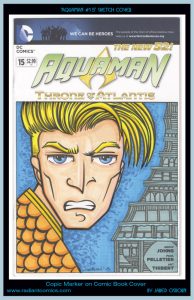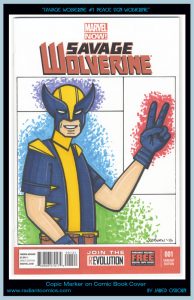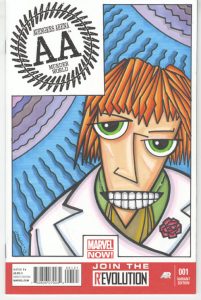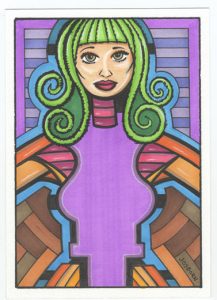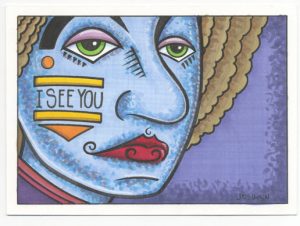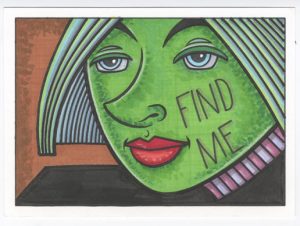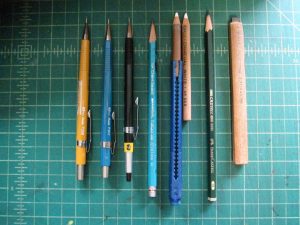“Four Talking Boxes” is the comic strip I run here on my site five days a week. I’ve never been in love with the strip’s name but I’ve also never been able to come up with a better one. I always thought I’d be able to but instead failed in that endeavor. I had pages and pages (well, they were little pages) worth of names that were all worse. Finally I just settled on “Four Talking Boxes” and it’s been with me ever since. I guess I’m stuck with it.
I though I’d write about the process of making my strip since it’s so familiar and mundane to me that I never think about it but no one else knows anything about the rather odd process. It’s starts with all the work I did designing the characters when I first started making the strip. Since there was no way I was going to have the time to draw a five day a week strip I had to come up with some other way to do it. I ended up designing six characters, drawing them in a half dozen poses, and importing and coloring them in Illustrator.
Bringing them into Illustrator allowed me to make them into vector based artwork so that I could manipulate the faces easier. I made them all so I could move their eyeballs where I wanted them to go plus fool around with the other parts of the faces a little bit.
“Four Talking Boxes” is a talking heads strip. That means it’s mostly about the writing. That’s another reason I came up with the cut and paste way of making this strip. I don’t think I could draw the same faces over and over. Certainly not without getting paid for it. Though I think my strip would be categorized as a gag-a-day comic strip I have no interest in writing gags. Set-up/pause/punch-line doesn’t interest me. I wanted to go a little more free form.
My inspiration for the strip was conversations we used to have back when I worked in the Marvel Comics production bullpen. There were a bunch of us in a big room talking and working all day. A lot of creative people worked there and you never knew what would start a conversation and in what direction in would go. It was fun. One of the things I try to do when writing “Four Talking Boxes” is to have twists in the conversations. By the time the fourth panel comes around I don’t want it to have a direct link with the first one. I want to be able to read the first panel and then the fourth and say, “How did they get there?”. At times I’ve gotten lazy and had the fourth panel end up in the obvious place referenced by the first panel and I’ve gone back and rewritten the strip. People often like and relate to the obvious but I prefer to stay away from it. It’s not easy though.
I write the strips whenever I can. Often I write them just before I go to bed. I don’t know why but often I write better late at night. Being that I’m a morning person that’s odd. But I mix it up to. For a little while I was writing them first thing in the morning. That ended and now it’s anytime. Morning, night, right after diner, it can be whenever as long as I write five a week. I’ve managed to get five a week done for quite a while now. I also write them without a particular character’s voice in mind. At least not consciously. When I go to put the visuals of the strip together I never have a problem figuring out which character should be saying what so somewhere in my mind I’m paying attention to the character’s voices.
For over two years I finished five strips every Thursday morning. When I first started making the strip I squeezed one in whenever I could be it Sunday morning or Tuesday night but eventually I decided I needed a schedule. Thursday morning I’d drop everything else I was doing and get five strips done. Each one takes about half an hour to finish. First I decide which characters are speaking then I open their files with the various drawing of each one in them and finally build each panel. I put a charter down an the right and then the left. I have to decide which way they are facing and what size each one is going to be. Then I move their eyes so that they’re looking at each other. I also change the thickness of the black outline to get the separation between the characters that I want. Finally I vary their expressions a little. An eyebrow here, a mouth there, and even a nose every now and again. I just want to add a little variety to the talking heads. After all that is over I adjust the balloon pointers so they go towards the characters and add a background pattern.
I abandoned doing these on Thursday mornings only a couple of months ago. I couldn’t stand doing five of them all in a row anymore. It got tedious. So now I’m back to getting one or two done a day. I started by spreading them out over the week but for some reason I’ve settled into getting two done on Saturday, two done on Sunday and one done on Monday. It’s still tough getting them done but I’ve had a little more energy for it since changing my schedule around. Plus I like that I’ve been able to get them done.It’s an accomplishment. No matter how little fame, money, or glory it brings it’s still an accomplishment to me. So I trudge on.
And here is an amusing little aside for you. I’m about six months ahead in making these strips. I wanted to make sure I had a whole bunch of them done before I started posting them and I’ve managed to keep the schedule since them. As a consequence I don’t always remember the strips as they post. When they pop up on any given day that’s the first time I’ve seen them is six months. I enjoy that they’re a surprise to me. Even though I occasionally have to fix a typo after they’ve been posted.
